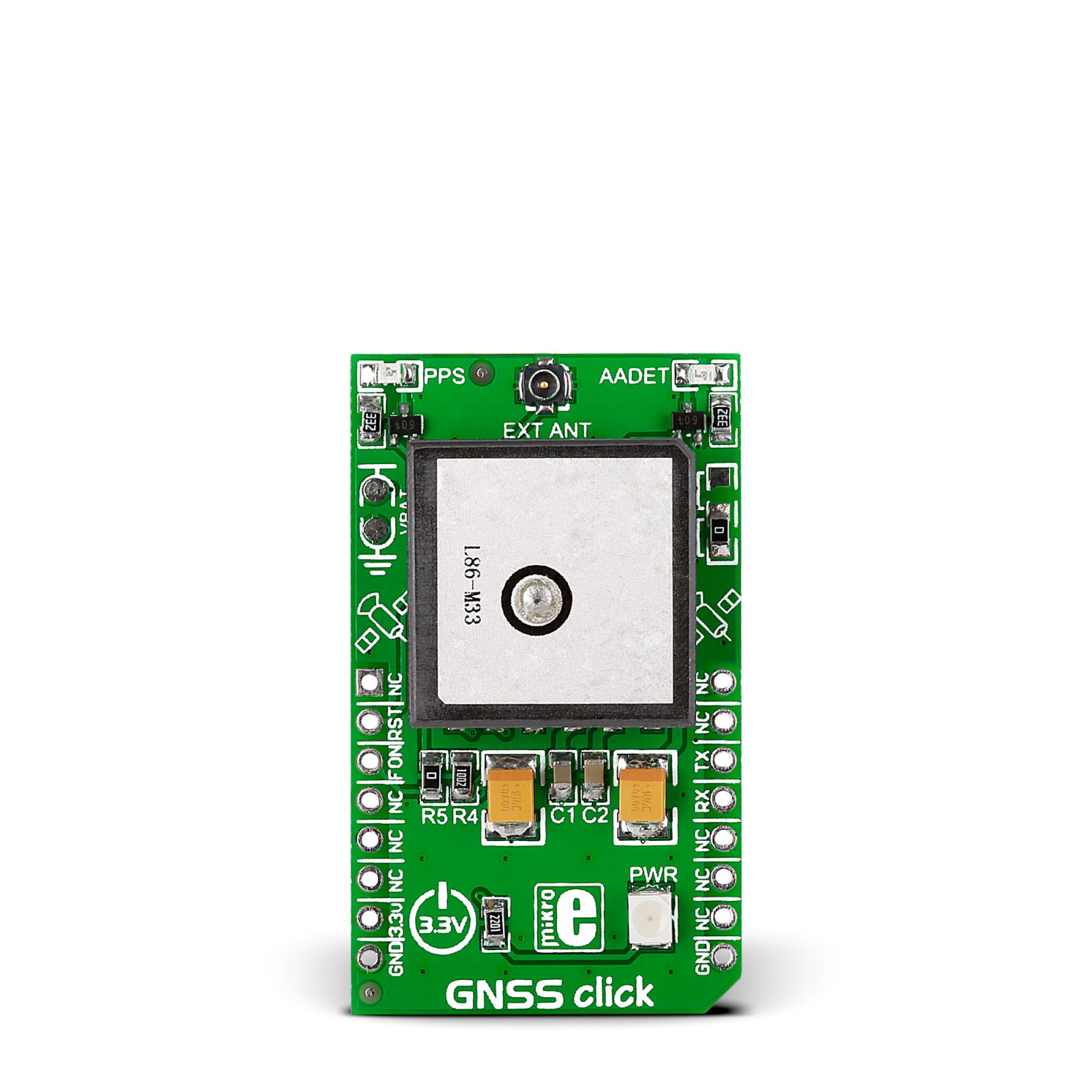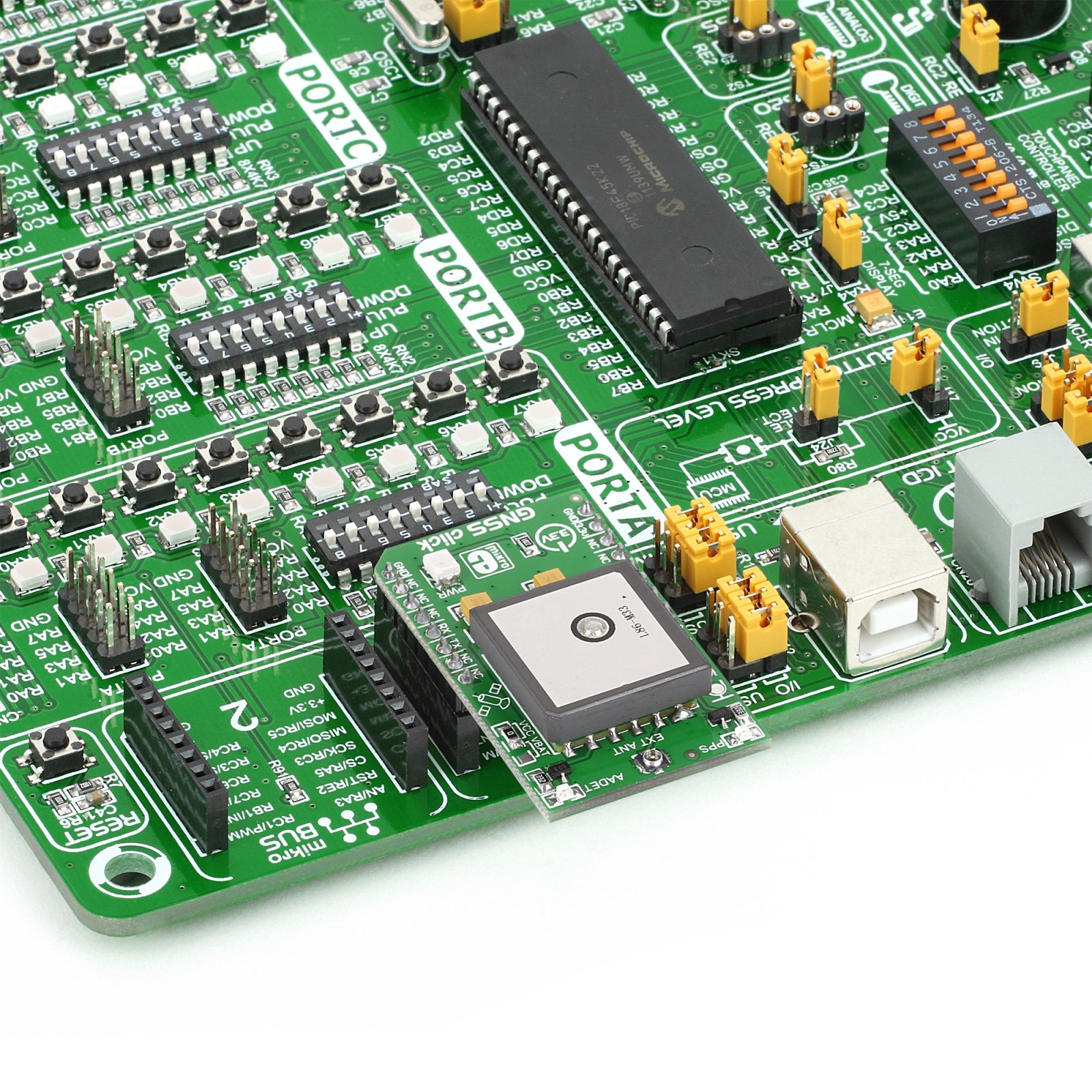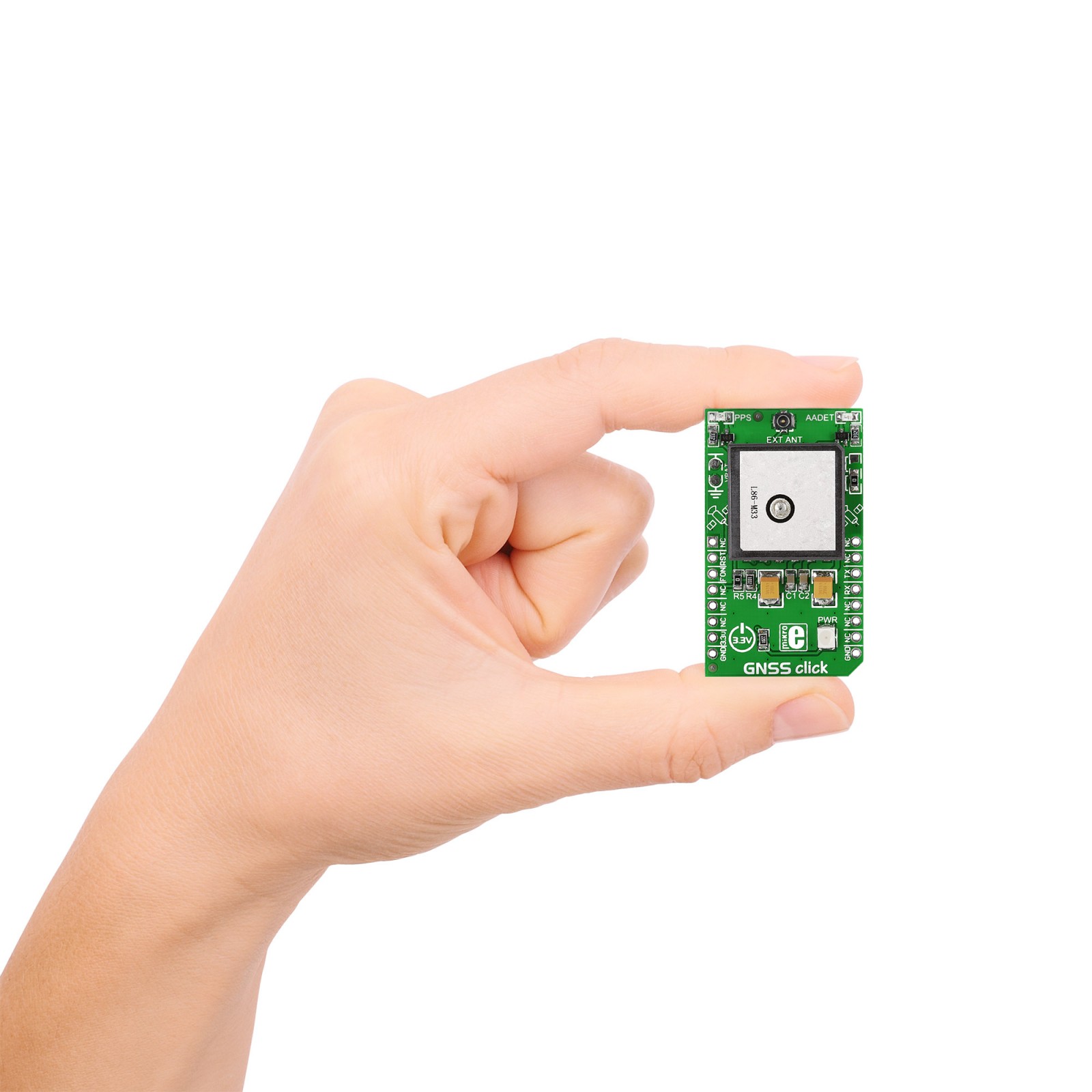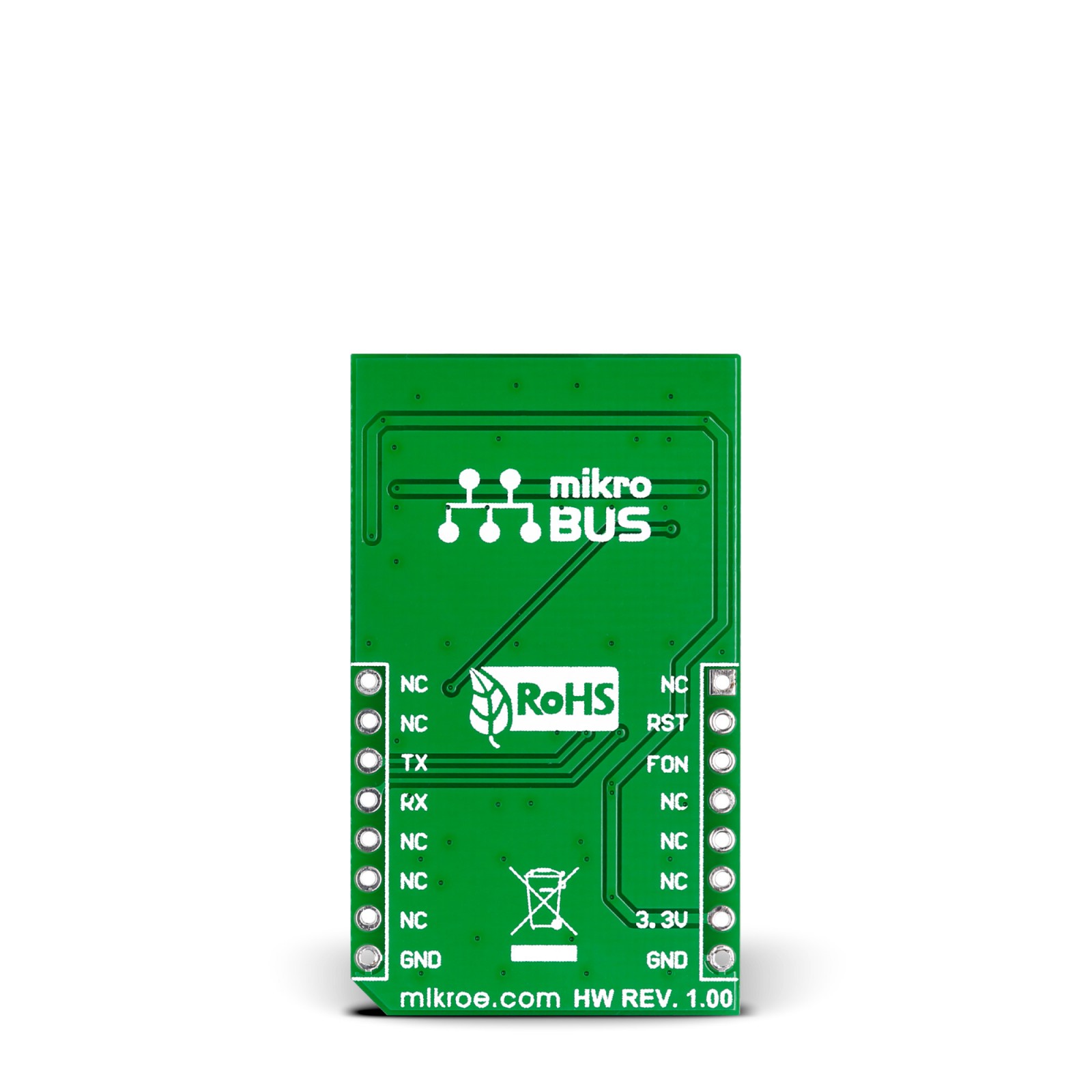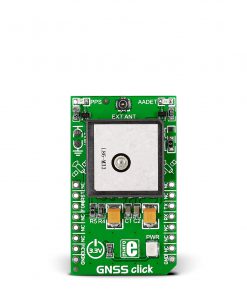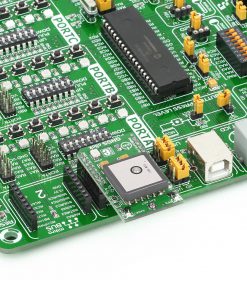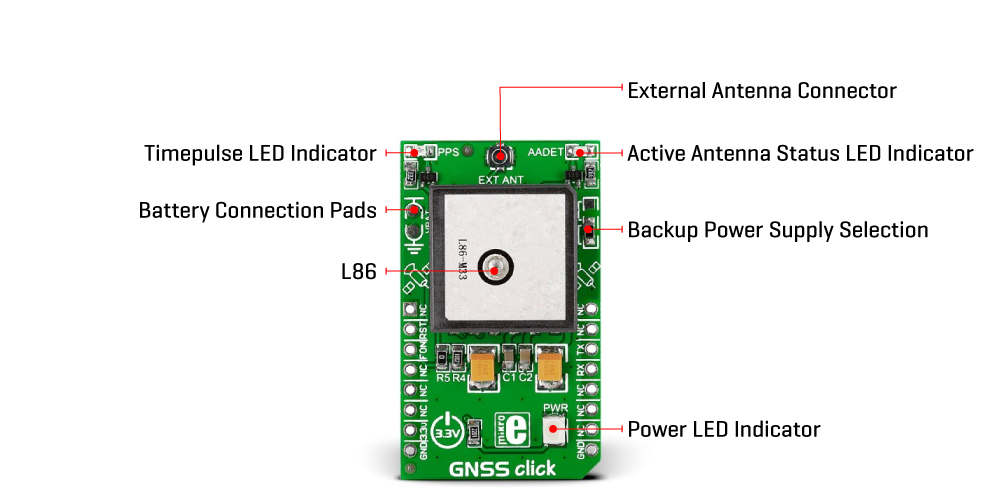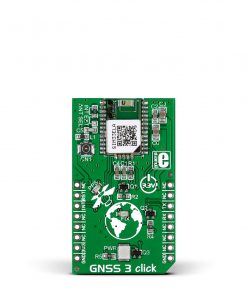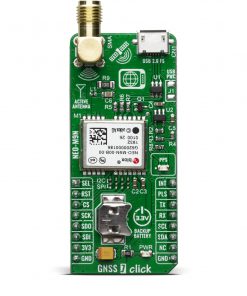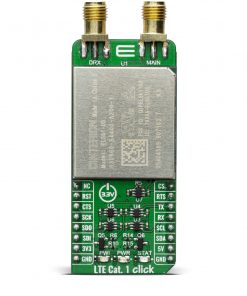GNSS Click
R990.00 ex. VAT
GNSS Click is a compact add-on board that provides fast positioning capability. This board features the L86, an ultra-compact GNSS Patch-on-Top (POT) module from Quectel Wireless Solutions. It is a concurrent GNSS receiver with a multi-GNSS engine that provides simultaneous GPS, GLONASS, Galileo, and QZSS open-service L1 reception capability. Combining advanced AGPS called EASY™ and proven Alwayslocate™ technology, L86 achieves the highest performance and fully meets the industrial standard. This Click board™ is suitable for acquisition and tracking and represents an ideal product for automotive, consumer, and industrial tracking applications.
GNSS Click is supported by a mikroSDK compliant library, which includes functions that simplify software development. This Click board™ comes as a fully tested product, ready to be used on a system equipped with the mikroBUS™ socket.
Stock: Lead-time applicable.
| 5+ | R940.50 |
| 10+ | R891.00 |
| 15+ | R841.50 |
| 20+ | R809.82 |

